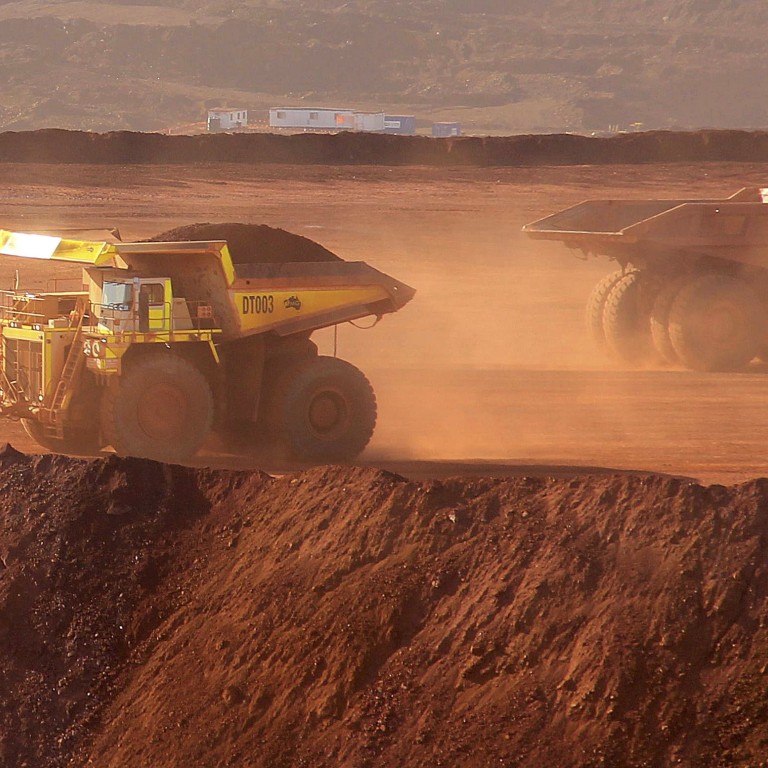
Australia’s Fortescue holds back on rail stake sale as profit soars
Australia’s Fortescue Metals Group, shored up by soaring iron ore output and deep cost cuts, has scrapped a September deadline for selling a stake in its port and rail business, spurning offers it has received so far.
The world no.4 iron ore miner has nearly completed a US$9 billion expansion to triple its output and booked a 67 per cent rise in half-year profit on Thursday which beat forecasts.
It rewarded shareholders with a much bigger dividend than expected, armed with strong cash flows which it also plans to use to start paying down US$10 billion in debt.
Fortescue put a minority stake in its port and rail business, The Pilbara Infrastructure (TPI), up for sale last December with the aim of raising around US$3 billion to pay down debt after a scare last year when iron ore prices sank to a three-year low.
The iron ore rail line would be the first to be open to outside investors, and has solid growth prospects as other miners would pay to use the line rather than build their own.
The minority stake attracted strong interest, with Fortescue’s advisers Macquarie and Lazard scouring the world for potential bidders, but following an iron ore price recovery, the urgency to sell eased.
“We’ve had significant interest from global infrastructure investors and that has generated significant offers. However to date they have not met our objectives for value and terms,” Chief Executive Nev Power told reporters.
The company had initially aimed to reach a deal that would allow it to retain a majority stake and keep control over the port and rail operations by the end of June. It extended that to September, but Power said on Thursday there is now no deadline.
“It’s not shelved. We’re in discussions with parties right now,” he said. “We don’t expect to see anything in the September quarter but we haven’t set a date on it.”
Fortescue’s net profit rose to US$1.75 billion for the year to June from US$1.56 billion a year earlier, ahead of analysts’ forecasts around US$1.68 billion, according to Thomson Reuters I/B/E/S.
Based on Reuters calculations, profit for the second-half of the year soared to US$1.268 billion from US$468 million a year earlier.
The company cut US$400 million in costs, which it said was 30 per cent more than expected.
It paid a final dividend of 10 cents a share, compared with analysts’ forecasts of 4 cents.
“The dividend reflects a couple of things -- predominantly the strong underlying financial performance that we’ve got in the company and the confidence in that continuing going forward,” Power said.
Fortescue shipped 80.9 million tonnes of iron ore in the current financial year, up 41 per cent on a year earlier, and is on track to reach a production rate of 155 million tonnes a year in December.
By comparison, Rio Tinto expects to be producing at 290 million tonnes a year and BHP Billiton at 220 million tonnes a year by end-September.
Fortescue has been buoyed by an iron ore price recovery to around US$139 which has defied market forecasts despite cooler Chinese growth, and fueled a 44 per cent rally in Fortescue’s share price over the past two months.
Fortescue’s shares rose as much as 4.9 per cent to US$4.29 on Thursday, while the broader market fell 0.7 per cent.
Fortescue said its cash balance was strong enough to allow it to start repaying debt this year, which it would do, with initial payments in the hundreds of millions of dollars.
“With growth capex effectively done by this year, FMG has the potential to become a ‘cash machine’,” Barclays analyst Ephrem Ravi said in a note last week.
Fortescue still expects iron ore prices to average between US$110 and US$130 a tonne for the foreseeable future, although prices are likely to remain volatile, Power said, adding the company remains confident in Chinese demand for seaborne iron ore for the next several decades.

